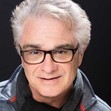More Thoughts on Le Carré
… implying that behavior is a set of masks worn to suit the situation and the audience. He further observed that there is no “grand plan” or “masterminds” at the center of human affairs and geopolitics.
Documentarian Errol Morris interviews the late John Le Carré about his memoir, which names many of the real-world models for his fictional characters.
After my recent post containing my book review of The Pigeon Tunnel, a subscriber wrote me this:
I also recently watched the documentary so I especially enjoyed reading your review. I was fascinated by him, but it was unsettling to realize how human and how broken Cornwell seemed. What stood out to me most was how his childhood seemed to make him fragile and yet ruthless. I always thought of our intelligence community as coming from the cream of the crop. Obviously they must be highly intelligent but It was surprising to hear that questionable, shadier characters may be better suited to service than saints.
Thank you for sharing your review with me. Your comments are always interesting, thoughtful and fresh. I also find him an engaging storyteller, frighteningly candid. I appreciated your point that the issue is larger now than any revelation of misbehavior by "Five Eyes" but has evolved into a growing global shadow entity with unlimited and untraceable funding that gives it potentially unknowable influence.
Cornwell was a fascinating person. Broken, yes, but wise from worldly “lessons learned,” as they say in the trade, which are diligently documented and then often simply filed away and ignored. Even though (in the early days, at least) he had to have his manuscripts vetted by his service, he has from the beginning intended to speak truth to power. I’ve had lots of courses in history, and in high school senior year, I took US diplomatic history. But I’ve learned a lot more about geopolitics from his “made-up” stories.
I’m also rewatching The Night Manager, which was originally on ShowTime but is now on Amazon Prime. That is his best book after Tinker Tailor in my view, although I’m obviously drawn to The Constant Gardener because it is set in Kenya. Written years before Covid, that book warns about Big Pharma experimenting on the populations of third-world countries. He researched that book diligently and said the truth was much more chilling.
I hadn’t watched the documentary when I wrote the book review. Now I have, as well as the one with Rumsfeld, The Unknown Known. What stuns me about Errol Morris’s interview with Rumsfeld is that, frank as some of his questions were, he never asked about the reported $2T of DoD transactions that can’t be traced. Rumsfeld made that admission in a press conference on September 10, 2001, and as far as I can tell, no one followed up. Now, that amount of money is not only huge - it was about triple the department’s annual budget at the time. So any reporter who wasn’t asleep and who possessed a grade-school understanding of arithmetic, could have asked the follow-up:
Mr. Secretary, over what period of time can’t these transactions be traced?
Granted, there isn’t a one-for-one correspondence between budget dollars and transactions. For example, allocations and disbursements are separate transactions, representing the ins and outs. But if the divisor is anything less than a few years, getting to $2T would seem impossible, especially when government contract employees must account for their labor hours in 10-minute increments, and budget estimates are supposed to get extra review if they end up being plus or minus 5 percent of actual.
Now, giving the Secretary the benefit of the doubt, the divisor might be the time period since the department began to use computers. That would have been back in the punched-card days of the IBM 360, in the late 1950s. In those days, government auditors had developed no methods for “looking inside” computer processing. The auditors, who were schooled in following paper audit trails, would examine inputs and outputs. Until much later (around 1980), auditors developed “test decks” to pose hypothetical transactions at the limits of acceptability. The term stuck even though the decks were no longer cards and the tests were injected by portable computers (not yet laptops) about the size of a suitcase.
So, to continue thinking about thinking about the $2T puzzle, if indeed the timeframe of Rumsfeld’s analysis spanned roughly 50 years, how did our government manage to “misplace” $40 billion per year? I mean, adjusted for inflation, even $1 Billion back in the day was real money!

Feed your curiosity with a paid subscription to this Thinking About Thinking blog. You’ll gain access to all the content that’s here, and you’ll be helping us build our worldwide community through storytelling and self-expression.
And if you’re already a subscriber…



